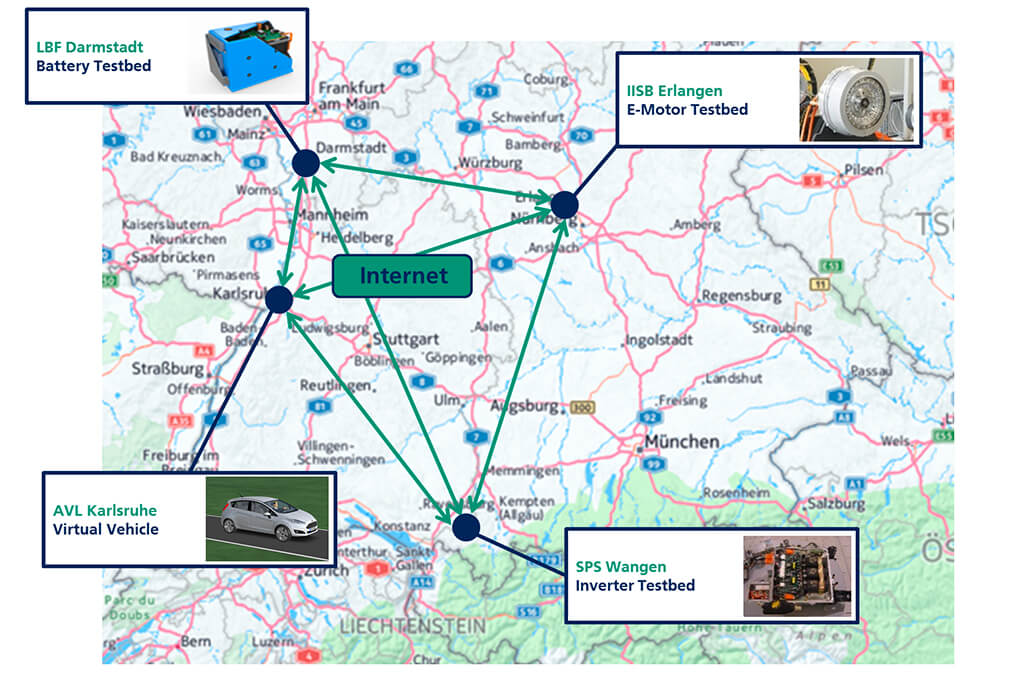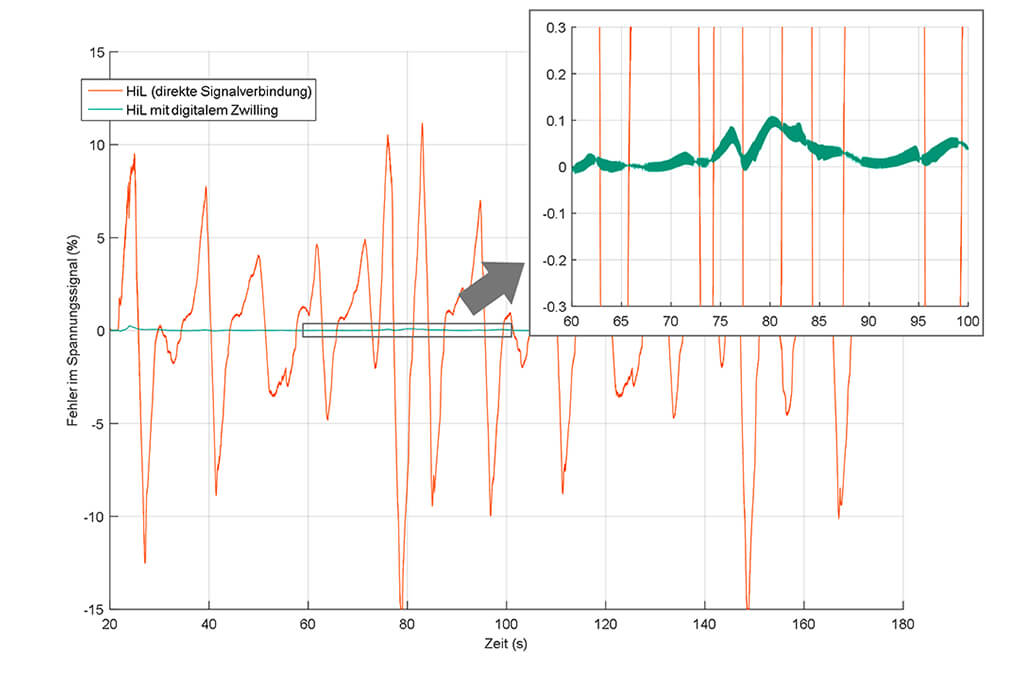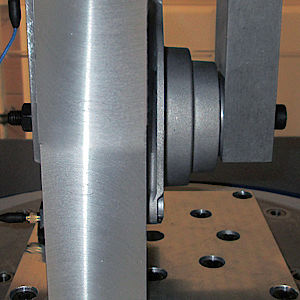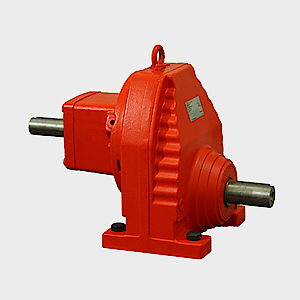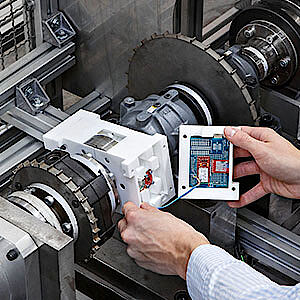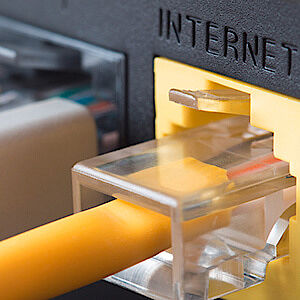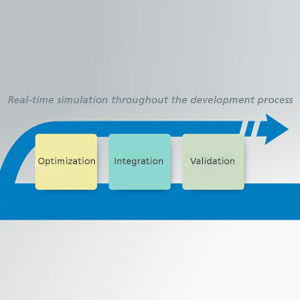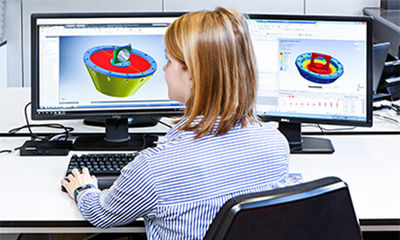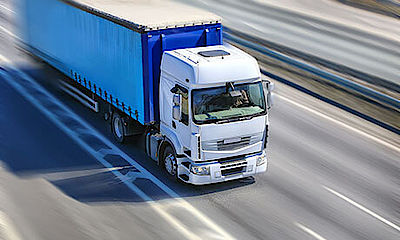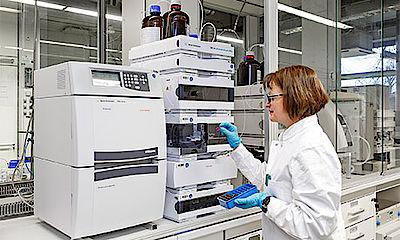Cyber-physical networked testing reduces development times.
Digitalization, extended hardware-in-the-loop application, digital twin, reduced development time
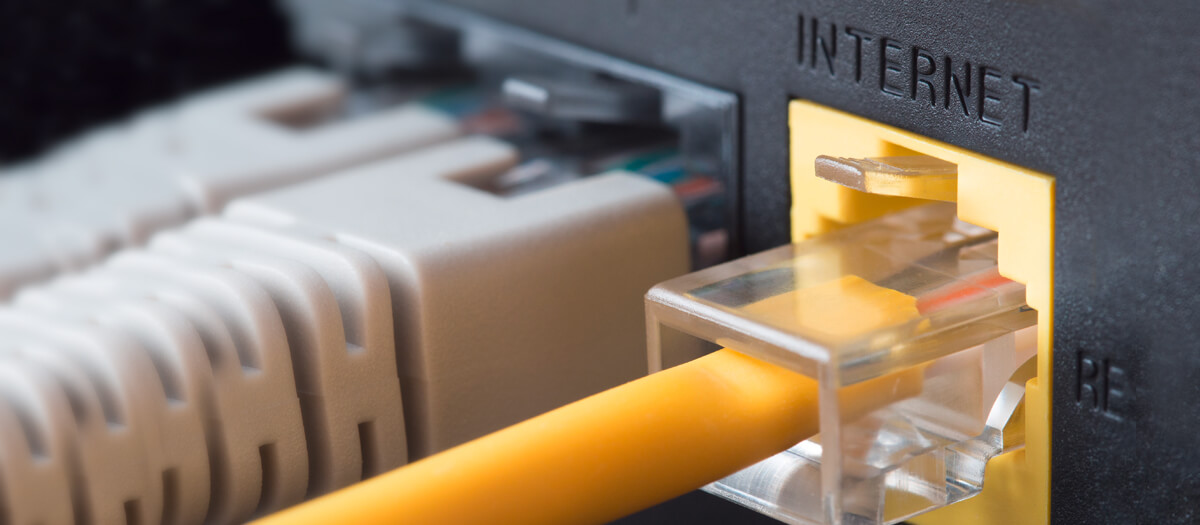
Based on an extension of hardware-in-the-loop (HiL) technology and a VPN-supported, cross-company network, scientists at Fraunhofer LBF have developed new methods for a cyber-physical approach to testing. These new methods have been developed as part of the joint TechReaL project for cross-location and cross-partner networking of existing component and system test benches. The primary goal is to reduce costs and time through early commissioning and testing of individual components at a realistic overall system level.
Today, the development and production of vehicles and systems does not simply take place at one location. In order to test an overall system, components have until now had to be assembled at one location. In the industry, there is great interest in reducing the associated time as well as the financial and logistical expenses.
Reduction of development costs and development time
To this end, Fraunhofer LBF has worked with partners from science and industry in the past three years to investigate how components and test benches can be networked on a distributed and cross-location basis and combined into an overall testing system on the basis of digitalization and modern network technology. In the TechReaL project funded by BMWi, a networked testing environment for an electric drive train for a passenger vehicle including traction battery was constructed on a cross-location basis and completed to great success in December 2018. It was possible to demonstrate that a reduction in development costs and time of 15% can be achieved through this approach.
The technical basis of networked testing is a cross-location VPN network, which uses the Internet to connect the different test benches and computers that are distributed across Germany. This project network must meet the requirements of cross-partner, multilateral communication between the different nodes. However, it must also prevent unwanted external access to the company’s in-house primary network.
Another key element in the technical basis for realistic networked testing is HiL technology. This involves integrating an existing sub-system and its test bench into a virtual environment. Ultimately, this allows realistic testing to take place, as the sub-system being tested is integrated under the same conditions as in the overall system. In this process, the virtual environment simulates the missing sub-systems of the overall system.
In TechReaL, an innovative extension to the traditional HiL approach was developed: There are several actual components in the test rather than just one, and the closed signal exchange takes place via the Internet. The actual components, supplemented virtually to created an overall system, are tested simultaneously in real time at multiple cross-partner locations. As the mechanical components are connected to software and the Internet, this is known as a cyber-physical system.
Fraunhofer LBF develops technical solutions for networked HiL testing
As communication takes place via the Internet and the transmission quality may fluctuate, signal delays may occur. The project results show that this latency is typically much longer than the data exchange rate required by the dynamics of the entire HiL system. Latency impairs the quality of the results and may cause the simulation and test to fail. To solve this challenge, a methodology was developed at Fraunhofer LBF based on digital twins. It consists of a simulation model of the test specimen and an identification strategy for the associated model parameters. The simulation of the digital twin that runs in parallel to the test predicts the exchange signals between the components, ensuring a continuous data exchange and test sequence. To safeguard the quality of the estimate, the digital twin is updated on the basis of currently measured signals on the actual component.
This methodology was used successfully on the use case of the HV battery in conjunction with the test of other drive train components and the overall vehicle simulation, and was tested in networked experiments. From the battery, the voltage signal was evaluated that serves as the input variable for the vehicle simulation at another location. Due to the latency in communication, errors at a level of 15% were measured. With the use of the methodology that was developed, errors were reduced to 0.1%.
In addition to this work, the LBF team was heavily involved in building up the project network and developing additional cross-partner simulation models with real-time capability for cyber-physical testing. Additional work in this forward-looking and highly exciting field is already under way or in the pipeline.
Customer benefit
The reliable, networked HiL component test removes the need for components to be assembled into an overall system, enabling development cost reductions of up to 15%.
AVL Deutschland GmbH
Set Power Systems GmbH
Schaeffler Technologies AG & CO. KG
Fraunhofer IISB
Fraunhofer LBF (overall coordination)
BMW (associated)




“Thanks to the successful cooperation, innovative approaches and solutions, the TechReaL project makes an important contribution to cross-location, networked testing.” David Nickel, AVL, Project Manager
Contact
- Dipl.-Ing. Eva Stelter
- Phone: +49 6151 705-8265
- eva.stelter@lbf.fraunhofer.de
- Ph.D. Riccardo Bartolozzi
- Phone: +49 6151 705-8264
- riccardo.bartolozzi@lbf.fraunhofer.de
